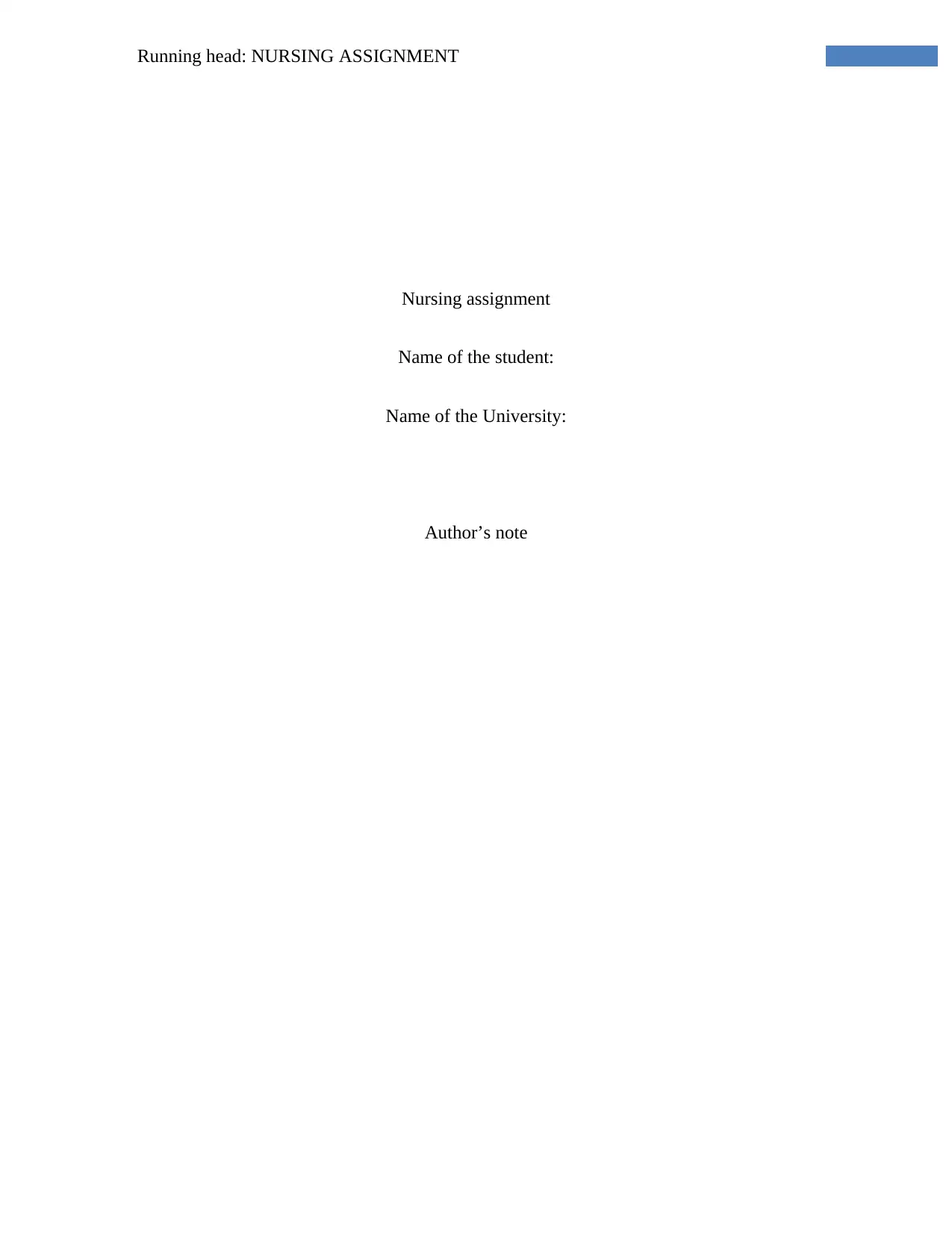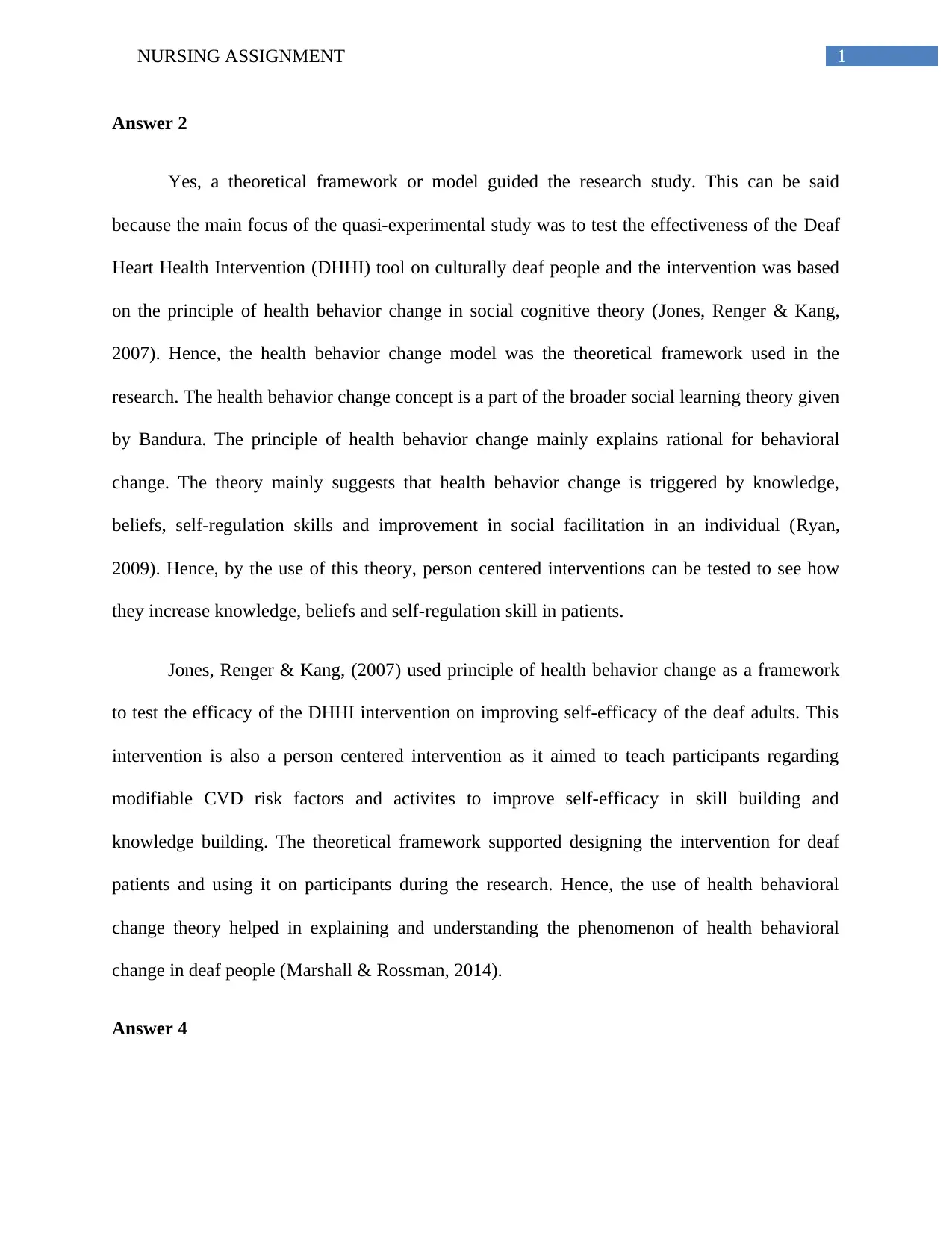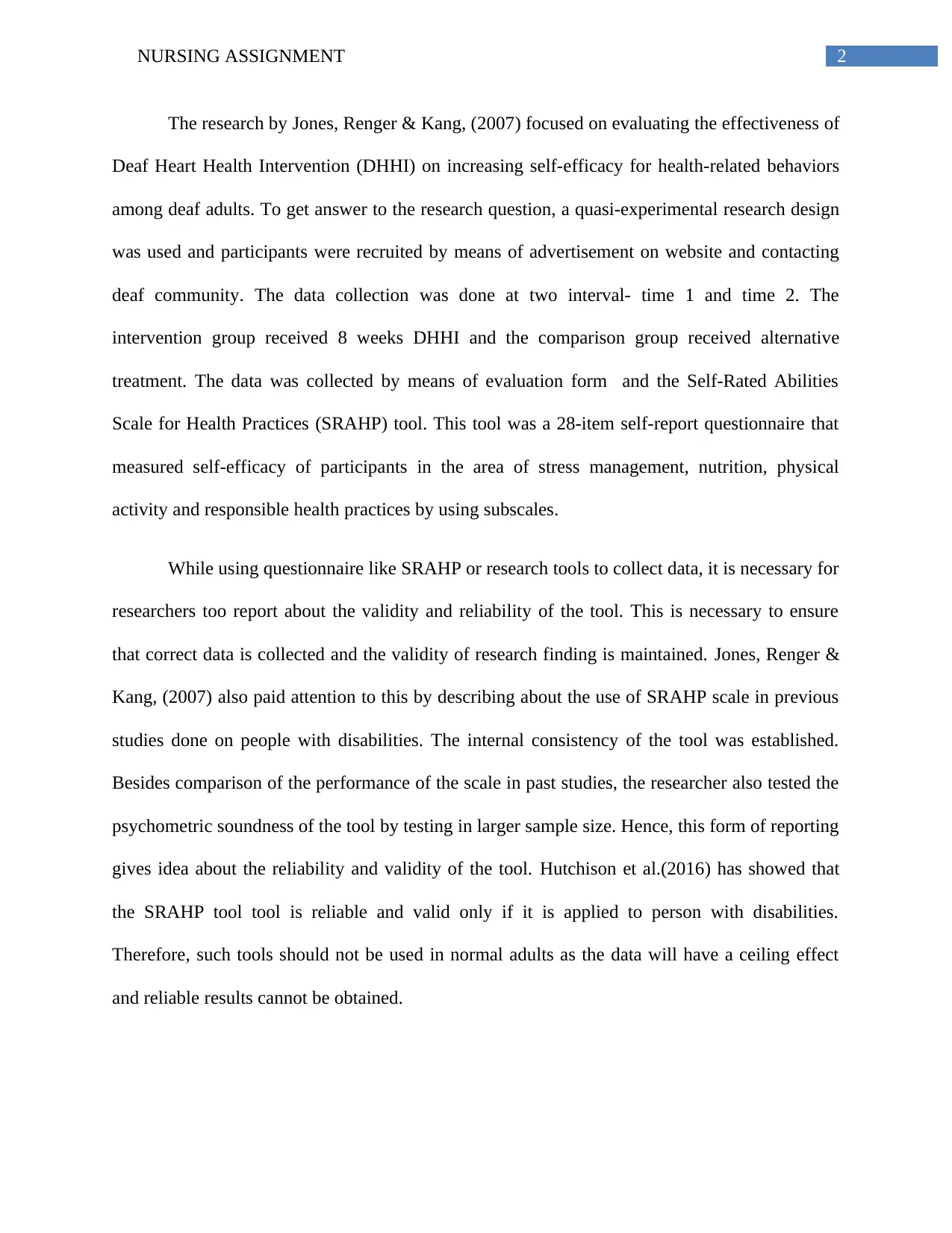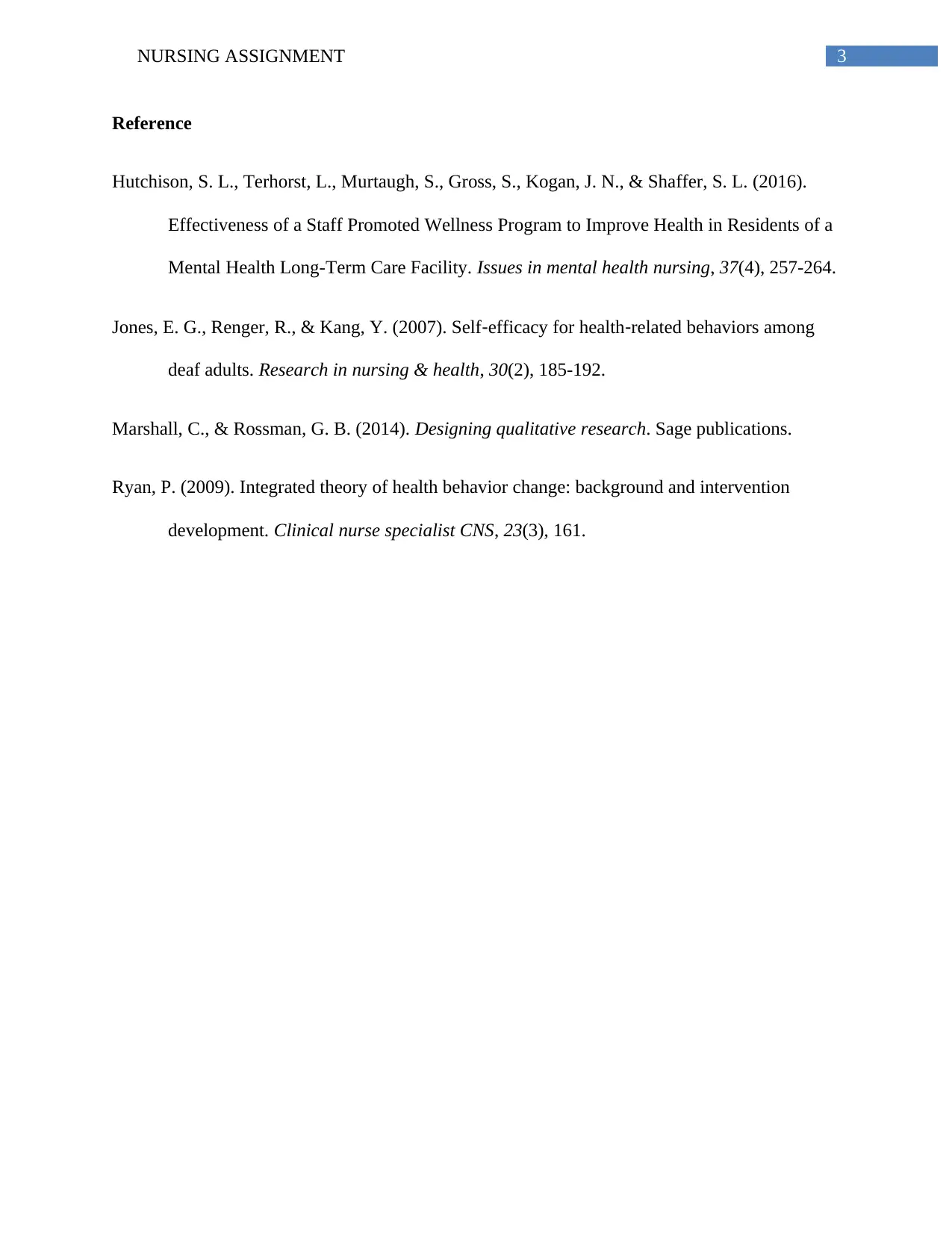Nursing Research: Analyzing Health Interventions for Deaf Adults
VerifiedAdded on 2023/06/15
|4
|815
|90
Report
AI Summary
This nursing assignment critically evaluates a research study focused on the effectiveness of the Deaf Heart Health Intervention (DHHI) in improving self-efficacy among deaf adults. The analysis highlights the use of the health behavior change model, derived from social cognitive theory, as the theoretical framework guiding the intervention. The assignment discusses the quasi-experimental design employed in the study, including participant recruitment, data collection methods using the Self-Rated Abilities Scale for Health Practices (SRAHP), and the importance of establishing the validity and reliability of research tools. The report emphasizes the relevance of the SRAHP tool for individuals with disabilities and its limitations for use in general adult populations. Ultimately, the assignment provides a comprehensive overview of the research, its methodology, and the implications for developing tailored health interventions for culturally deaf adults.
1 out of 4









![[object Object]](/_next/static/media/star-bottom.7253800d.svg)